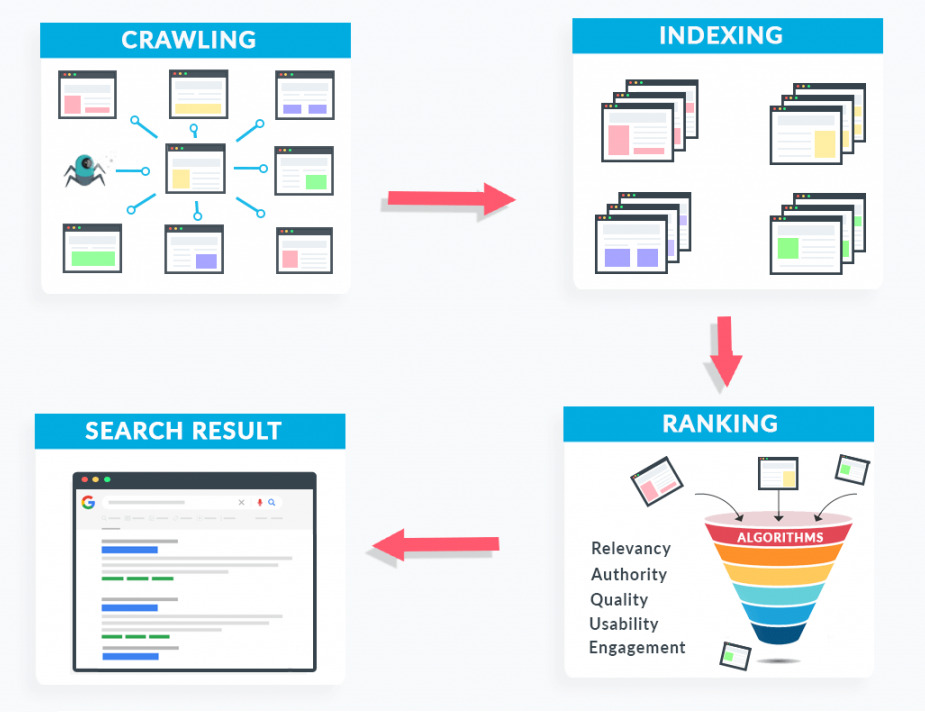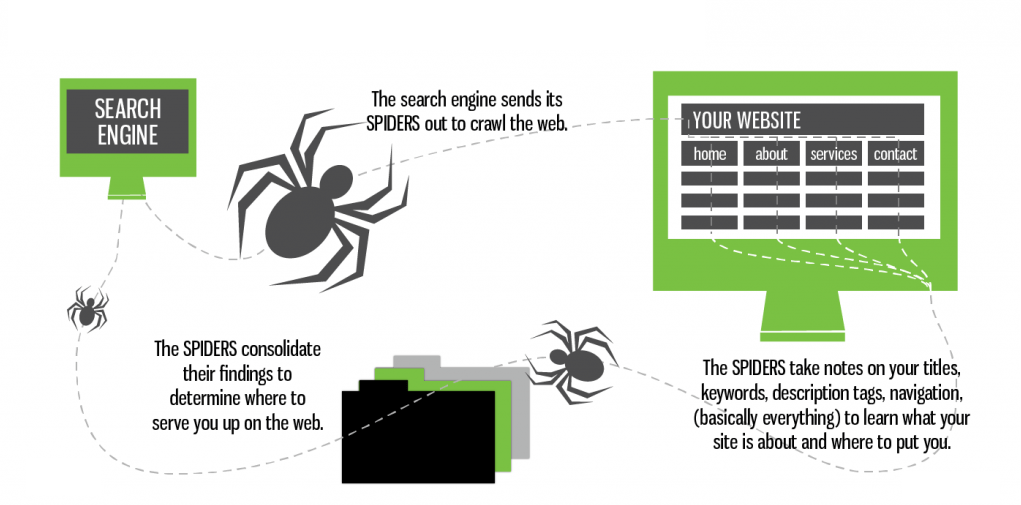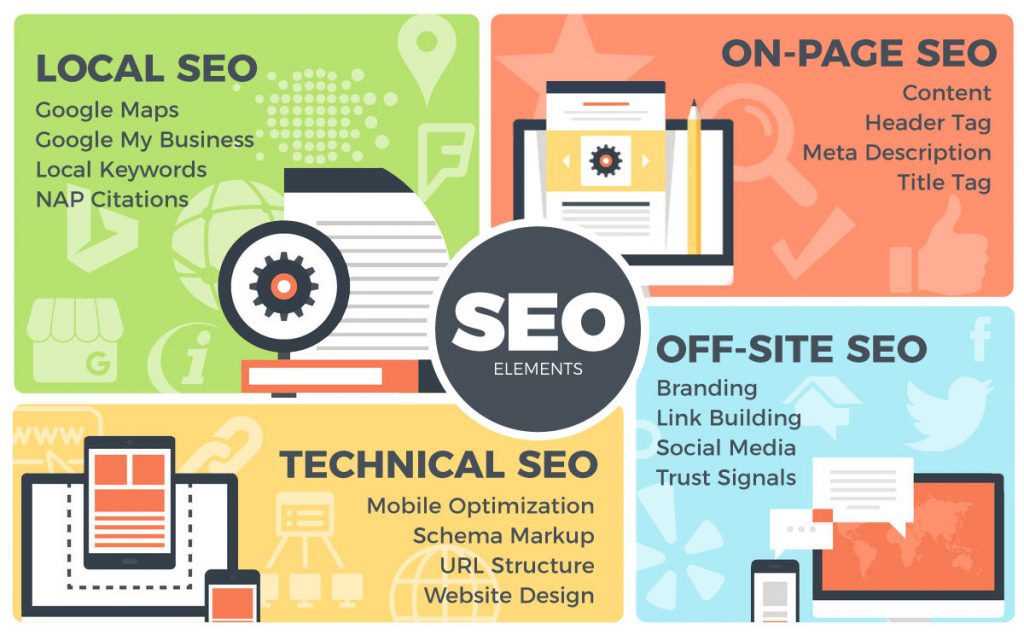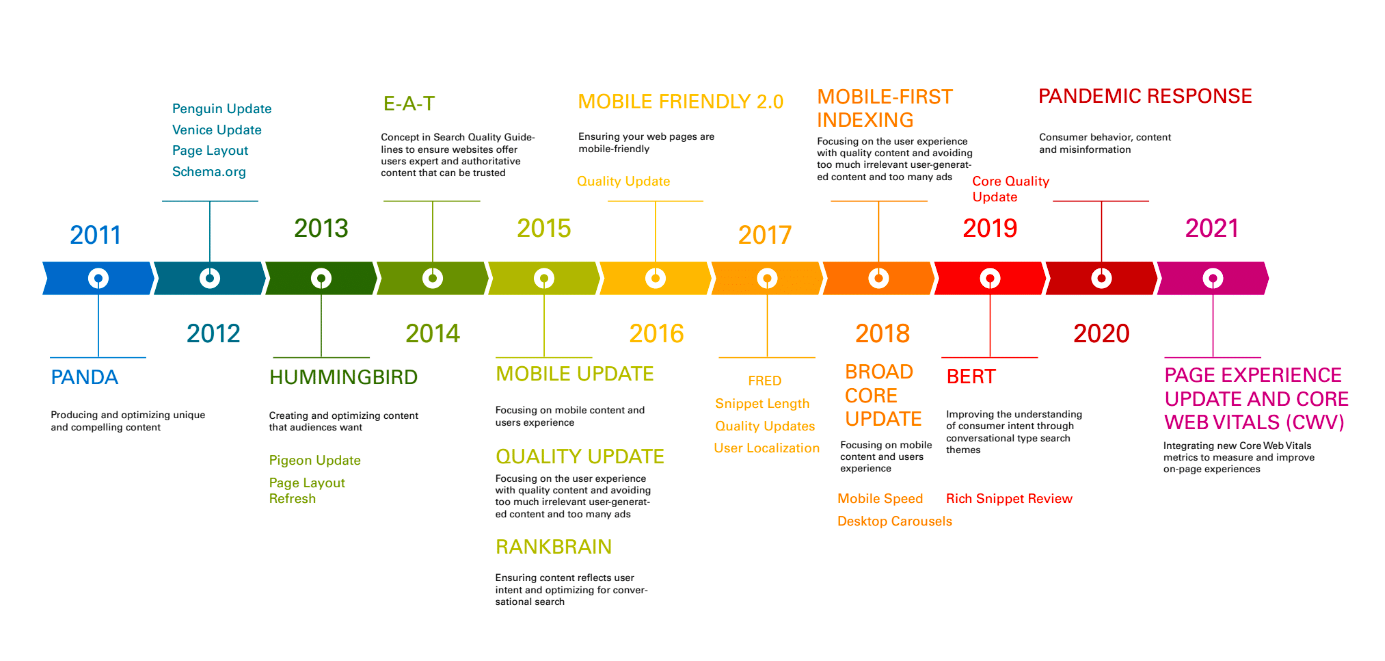Google Algorithm and Ranking System: Beginner’s Guide to SEO

As per a BrightEdge survey, 68% of consumers’ online experience begins with a search engine. Interestingly, a report from Backlinko shows only 0.78% of the Google searchers visit the results presented on the second page of the search result. Such statistical data itself proves how crucial and competitive it has become to secure a higher rank in the SERP.
Now, you may wonder how the pages are ranked in Google. What determines this hierarchy?
For this, you need to understand the Google search algorithm first.
What is a Search Algorithm?
Algorithms are essentially codes developed by Google with the use of machine learning languages and artificial intelligence. It is not humanely possible to read and track millions of pages available on the Internet. Therefore, Google created definite algorithms that check several essential quality parameters and important factors related to links and execute the ranking system. The algorithms, therefore, allow Google to find, rank, and offer the most relevant results against a particular user query.
Aim of a Search Engine Algorithm?
As already mentioned above, the aim of a search engine algorithm is to offer you high-quality and relevant content against a particular search query. But before you move forward to understand the aim of Google search algorithms, it is first crucial to understand how a search engine like Google works. This mainly involves 3 steps:
Step 1: Crawling
Google has web spiders or crawlers, which are popularly known as bots. A bot is essentially software that crawls thousands of web pages that exist on the web. These web spiders or bots scour the Internet to look for new web pages and also follow the links or sitemap files present in them to discover other relevant pages.
Step 2: Indexing
The next process involves indexing. The web pages which are found by the bots are added to a data structure known as an index. Indexing largely involves collecting key signals (like keywords, type of content, freshness, etc.), storing the data, and processing them to ensure fast information retrieval.
Step 3: Ranking
Lastly, ranking involves presenting the highest quality and relevant content against a particular search query in a hierarchical manner. This ordering of the contents as per relevance is known as ranking.

Now the work of Google search algorithms is directly related to ranking. It primarily works to offer a set of high-quality content that will meet the audience’s needs.
Google has introduced several search engine algorithms till date. Some of them are:
- Panda: Google introduced the Panda algorithm in 2011. This update was designed to reduce the rankings of pages with low-quality content and the ones that do not generate any value for the user.
- Penguin: The Penguin algorithm update was introduced in 2012 with the motive to exercise better control over black hat SEO techniques and reduce the rank of websites that had spammy, irrelevant back-links.
- Pigeon: The Pigeon algorithm update largely revolutionized local search. It offered local businesses that had a higher organic presence better visibility in traditional search. It also improved ranking parameters for both Google search and Google maps.
- Hummingbird: Google introduced the Hummingbird algorithm update in 2013. This Google search algorithm improved the way in which the search engine interpreted and understood search queries. It helped the search engine to understand the topic in broad and not just the keywords.

How Does a Search Engine Algorithm Work?
There are many factors that determine the working of Google search algorithm, like:
Step 1: Meaning Of The Query
To return the most relevant results to the users, it is extremely crucial to understand the intent behind a query first. To recognize this intent adequately, Google builds language models that try to decipher what strings of words the search engine must look up to index.
For example, if someone presents the query “buy MacBook”, it is pretty simple in the aspect of meaning as well as intent.
However, if someone searches for generalized terms like “apple”, this can mean apple as a brand or a fruit. In that case, Google will provide results which it considers best as per the search query and will also offer additional options which it feels goes right with the search intent.
Step 2: Relevance Of Webpages
Next, Google will estimate the relevance of web pages. This means that the algorithm will thoroughly analyze the contents of the pages to ensure whether the page contains adequate information that will be useful for the users. This process largely involves keyword matching. Apart from this, Google uses aggregated and anonymized interaction data to check the content of the page. This data is then transferred into signals that help the machine learning system understand the content better.
For example, if you search for laptops, you do not want content with the word laptop written hundreds of times. Therefore, Google algorithms check whether the content has some more relevant information other than the keyword itself, like pictures, videos, listicles, etc. Then, it will consider the page as relevant and of value.
Step 3: Your Content’s Quality
Google offers great priority to reliable sources. To this end, Google algorithms are built to offer signals that will help the search engine understand which web pages demonstrate expertise, authoritativeness, and trustworthiness on a given topic.
One of the most important algorithms in this respect is PageRank. PageRank takes into account the quality and quantity of links and offers a higher rank to websites that have backlinks from authoritative websites. It works on the assumption that the most reliable websites are likely to receive quality backlinks.
Step 4: Usability Of A Webpage
After confirming the quality of content, the next thing that Google will check is the usability of a page. This is to ensure that the web page is easy to use for the reader. Google search algorithms are developed accordingly and to analyze signals of several technical aspects like page responsiveness on various device types, page loading speed, adaptability on different browsers, security of the website, etc.
Next, after analyzing these signals, Google will promote only those pages which are more user-friendly than the others, irrespective of the content quality.
Step 5: Context And Setting
Lastly, search results in Google are highly influenced by individual circumstances and the respective preference of the users. This largely includes the location of users, search history, search setting, etc.
For instance, if you are located in New York and search for football, Google will show results related to American football and information related to the American football team Chicago Bears first. This will again change if you are located in London. In that case, Google will offer you results related to the Premier League first.
Further, Google also personalizes your search results. For example, if you had searched for England Vs Australia recently, and then you search for England again sometime soon, Google will offer you pages that contain information related to the match.

Having learned about how search engine algorithms work now, let’s look into how you can improve your website’s rank.
Best SEO Practices For Better Ranking
Here are some of the most recognized website ranking systems for SEO that will optimize your website for search engines and web crawlers.
Crawl Accessibility So That Search Engines Can Read Your Website
To secure a higher rank in Google search results, you must first ensure that the bots are able to find your page and crawl through it adequately. There are several factors that impact crawlability like, improper internal link structure, broken page redirects, server errors, unsupported scripts, and more.
In order to make your website easier to crawl, you can follow some of the most recognized methods like, submitting a sitemap to Google, strengthening the internal links to ensure all the contents of your page are connected, etc. Next, you must regularly update your web page and add fresh content. Further, you should also ensure that the page load speed is ideal.
Compelling Content that Answers Search Queries Optimally
Content is one of the most essential components of your site and largely determines the website ranking systems for SEO. Therefore, you must create compelling and informative content that will be of great value to the users.
Avoid using duplicate content or pages that feature exact copies of existing web pages. Next, long content like articles, blogs, etc., that cover extensive topics are considered extremely valuable and of authoritative nature by Google. In fact, a study by Backlinko states that the first pages in Google search results have an average of 1890 words.
Also, make sure to back your content with relevant data, statistics and make it thoroughly researched. This will increase the credibility of your content to both human readers as well as search engines.
Keyword Optimized to Attract Searchers & Search Engines
Crawlers track specific keywords of a web page to understand its relevance against a particular search query. Therefore, you must direct focus on researching, analyzing, and selecting the best keywords to get success in organic search results. To optimize your keywords, you must include the target keyword on the title tag.
Keywords must be integrated into link-building strategies as well. All internal links, navigational links, breadcrumb links, etc., should have the top optimized keywords. Also, the target keyword must be adequately distributed in your entire content.
Apart from these, you must include the target keywords in the meta-description, URL structure, and website structure to adequately optimize your web page.
Great User Experience Including Fast Load Speed and Compelling UX
Google always prioritizes pages that have faster loading speeds. The bots get only some milliseconds to crawl and index a page. Furthermore, page load speed is also an important parameter that determines user experience. Pages that take more time to load have a higher bounce rate, which in turn impacts their rankability. As per a 2018 Google statistic, it takes 3 seconds for a user to leave a site if it takes more time to load.
Therefore, you must focus on some of the best Google ranking factors 2021 given below to optimize the page load speed of your website.
- Enable file compression to reduce the size of CSS, HTML, JavaScript, etc., which are larger than 150 bytes.
- Reduce redirects.
- Improve server response.
- Optimize the images to reduce image loading time.
Apart from these, you should also focus on employing compelling UX. This involves creating simple website architecture, avoiding long lines, avoiding displaying everything on one screen, not packing everything in the drop-down menu, etc. Furthermore, it is also essential to make the website mobile-friendly. Since over 50% of web traffic comes from mobiles, the Google search algorithm exclusively focuses on this parameter.
Share-Worthy Content that Earns Links, Citations, and Amplification
Content amplification is also a powerful technique to increase rank in SERPs. For this, you need to create contents which are worthy of earning credible referrals and backlinks.
Marketers always value content with original facts, statistics, and insights. Incorporating exclusively researched data and reports in your content will make it incredibly powerful and worthy of earning quality links. Furthermore, infographics with plenty of statistics and quotes also make your content a linkable asset. In fact, this was one of the most recognized Google ranking factors in 2021. Another important practice that can make your website worthy of earning inbound links is extensive content on tutorials and guides. These are considered of great value to the users and act as a potential resource to attract more target audiences.
Title, URL, & Description to Draw High CTR
You must also lay great emphasis on securing an organic click-through rate or CTR. SEO ranking guides state that CTR optimization is one of the most crucial practices to improve your search performance.
For optimizing CTR, it is primarily important to optimize the title first. In fact, 8 out of 10 researchers will click the title that appears more appealing.
Next, you must focus on creating informative meta-descriptions that will offer the reader a detailed insight into the page’s content. Last but not least, you must structure the URL adequately. Make it humanely readable, include the target keyword in it, and try to match the URL to the title in most cases.
Snippet/Schema Markup to Stand Out in SERPs
In order to stand out in the Google search results, you must also focus on creating structured data and rich snippets. Most SEO ranking definitions describe snippet as a structured data mark-up added to a website’s existing HTML. This allows the search engines to have a better understanding of the contents of the pages.
Some of the SERP Rich Snippets that you can use are as follows:
- Video snippet: For this, host your video on YouTube with relevant details like upload date, duration, thumbnail URL, etc.
- Review snippet: These have higher CTR. To add a review snippet, you must implement schema.org and also follow the rules of search engines.
- Knowledge panel: You can also add a knowledge panel with extensive information about famous people, places, movies, sports, etc. These have higher CTR as well.
Google search algorithm is one of the most important aspects of a website ranking system. The various algorithm updates developed by Google over the years work with the primary motive to shortlist the most informative and user-friendly website and offer it a higher rank.

Conclusion
This piece focused on the rigorous quality checks that the algorithms conduct on multiple fronts like content quality, keyword placement, website load speed, and more. It also offered you insights into how the algorithms operate to understand the user’s query and provide the most relevant and authoritative pages as results. It also provided you with a detailed guide on some of the crucial SEO practices to optimize your website for advanced algorithm checks.
Do you have any other question?




My partner and I stumbled over here from a different
web page and thought I may as well check things out.
I like what I see so i am just following you.
Look forward to finding out about your web page for a second time.
Thank you for your blog. Really looking forward to reading more. Really Cool.
Hi! I could have sworn I’ve been to this blog before but after browsing through some of the post I realized it’s new to me. Nonetheless, I’m definitely delighted I found it and I’ll be book-marking and checking back often!
I would like to thank you for the efforts you’ve put in penning
this blog. I’m hoping to check out the same high-grade content from you in the future as well.
In truth, your creative writing abilities has inspired me
to get my very own website now ;)
Hello there, You have done a great job. I’ll certainly digg it and personally recommend to my friends.
I am confident they’ll be benefited from this website.
Really informative blog post.Thanks Again. Really Great.